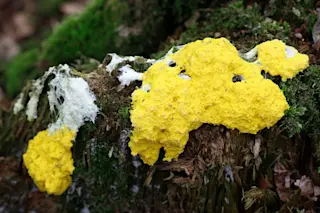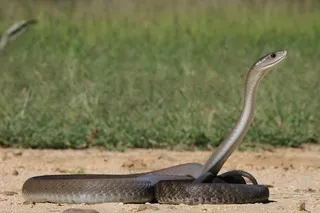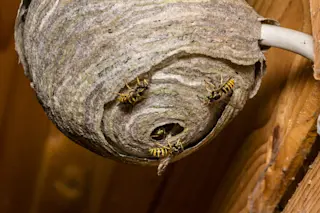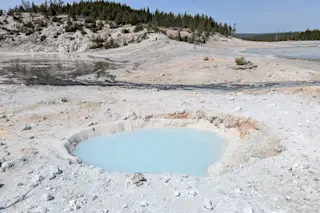Pity the poor slime mold. As if that name itself wasn’t bad enough, some species have even worse monikers, like dog vomit or scrambled egg slime. And despite the fact that they come in many striking shapes and colors, even the researchers who study them have to admit that many slime molds aren’t going to win you any lawn-and-garden contests if you find them growing in your flowerbed or mulch pile.
But in their own quiet way, they are much cooler — and smarter — than most people realize. Here are some facts about slime mold.
Is Slime Mold a Fungus?
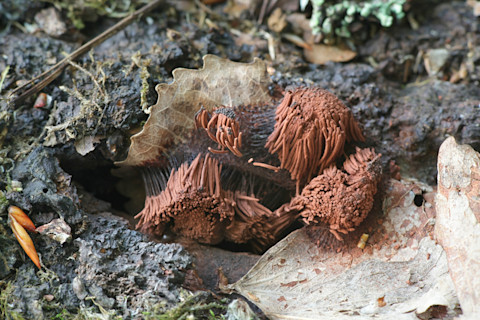
Chocolate Tube Slime Mold (Credit: Henri Koskinen/Shutterstock)
Henri Koskinen/Shutterstock
The term slime mold is something of a misnomer, for these creatures aren’t molds or fungi at all. They’re amoeba-like, and typically single-celled organisms classified as Myxomycetes in the kingdom Protista. However, you can’t blame earlier scientists for once classifying a slime mold as a fungus, since slime molds share some similarities with fungi, at least superficially.
Read More: Slime Molds Show Us the Perks of Being a Loner
For one thing, slime molds like to grow in damp areas or on rotting logs, and some of them sure do look like a disgusting fungus. Slime molds also reproduce in the way that fungi do, by producing spores. But their cellular structures are very different from fungi. Slime molds can also do some amazing things far beyond what a simple fungal growth can do.
You Can Find Many Types of Slime Molds
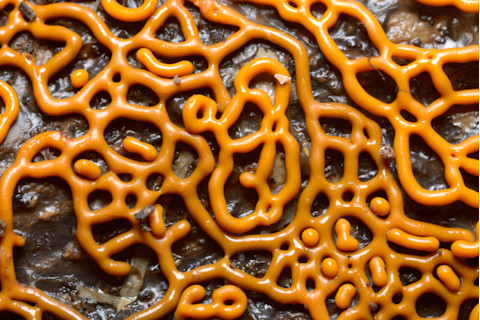
Pretzel Slime Mold (Credit: yamaoyaji/Shutterstock)
yamaoyaji/Shutterstock
Slime molds have been around for a surprisingly long time — as much as 2 billion years, before our world harbored any kind of plant or animal life. To date, Earth is home to 900+ known species of this organism, and they live on every continent, even Antarctica.
They come in a surprising array of colors — yellow, black, orange, white, brown — and not all of their common names are as disgusting as the poor old dog vomit variety. In fact, some names sound almost appetizing, especially when it comes to such slime molds as chocolate tube, red raspberry or even pretzel slime mold.
That said, you probably shouldn’t eat them. While they are technically edible and generally not toxic to humans, they’re not all that flavorful, and certainly won't taste like chocolate or raspberry. Better to leave them to slugs and insects like beetles, which are known to feast on slime molds.
What Does Slime Mold Do?
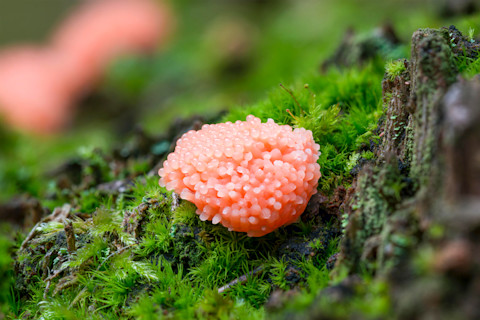
Red Raspberry Slime Mold (Credit: imageBROKER.com/Shutterstock)
imageBROKER.com/Shutterstock
While they possess no legs, wings or other limbs to propel them, slime molds can move, although they generally won’t break any land-speed records doing it. Once it’s on a surface, the blob-like slime molds have pseudopods that allow them to creep along at a rate of about a millimeter per hour. There is, however, a kind of pulsating slime mold that can move at speeds of more than a millimeter per second, making it the Flash of the slime mold world.
Even though they have nothing that we would recognize as a brain, slime molds can think after a fashion. Researchers have shown that when placed in mazes and given some incentive (like food), slime molds have chemical receptors that allow them to detect food sources. They can not only successfully navigate a maze to find its prize, but slime molds can also remember the path they took. What’s more, if you were to cut it up and let the individual parts go off to do their thing, slime molds can survive the separation and even fuse back together after a time. And once they fuse, each component part appears to be able to transfer knowledge amongst themselves.
How To Get Rid of Slime Mold
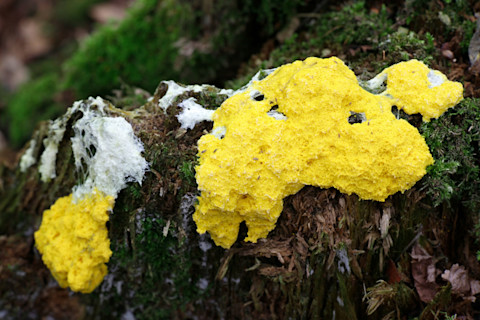
Dog Vomit Slime Mold (Credit: Henri Koskinen/Shutterstock)
Henri Koskinen/Shutterstock
As fascinating as they are, not everyone appreciates slime molds enough to allow the unsightly clumps to live rent-free in their yard. If you ever do find a slime mold in your garden, mulch pile or other damp areas, they’re safe and easy to get rid of. A high-pressure jet of water from a garden hose will dislodge most slime molds. You can also simply dig them up with a shovel, rake or pitchfork and dispose of them in your trash or compost heap.
Read More: Slime Molds Show Surprising Degree of Intelligence



